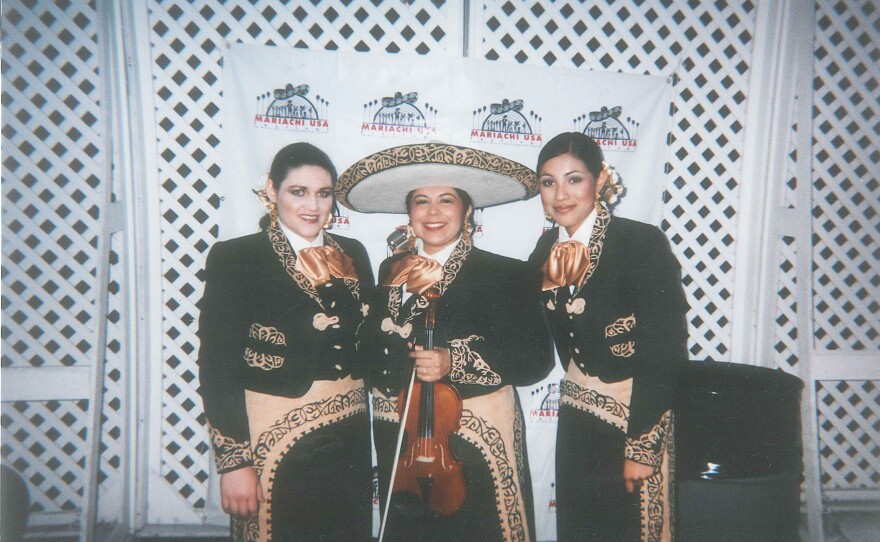When you think of mariachi music, certain images come to mind. Men playing guitars, violins and trumpets, wearing sombreros and embroidered suits. What doesn’t leap to mind, however, is women. But there is documentation of women playing mariachi music as far back as 1903. Today, there are roughly 30 all-female mariachi bands in the U.S. and close to 60 in South America and Europe. Still, only the images of men serenading passersby in the town square persists.

A new exhibit at the Women’s Museum of California in Point Loma hopes to spread the word that women are performing and excelling in this male-dominated genre. The exhibit is called "Viva! El Mariachi Femenil."
Leonor Xochitl Perez is the show's curator. By day, Perez is the Artistic Projects Manager at the San Diego Symphony. By night, she's researching a book on women in mariachi. She's also a trained violinist who performs in various mariachi groups.
Perez says mariachi music is very masculine in the way it's presented. "You stand when you play it. You throw yells. You’re very extroverted," Perez explains. "It's very strong and aggressive."
She says such behavior would be unusual for Mexican women who ascribe to traditional gender roles. Perez grew up in East L.A. during the 1970s. At home she was constantly told to be quiet, to be religious and to dress a certain way. "With mariachi music, I got to step out of that," Perez says. Outside her home, there was a resurgence in mariachi music informed by nationalist and civil rights movements.
The Point Loma exhibit will include paintings, photographs memorabilia and mariachi suits.
Female mariachi performers often wear long skirts, bolero jackets and a bowtie. Like the suits men wear, they are embellished with embroidery, gold buttons and sequins.
Perez says the suit is transformative. She remembers being uncomfortable having to wear a long gown for her 15th birthday celebration – or quinceañera. The very next day she had a mariachi performance.
"I remember right before they picked me up how I was so acutely aware of my pleasure in putting on that suit," Perez recalls. "Putting on the skirt and tying the bowtie. That became such an important part of how I identified myself."
"Viva! El Mariachi Femenil" will be up through October and a concert of female mariachi bands will take place on Oct. 13.






